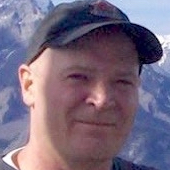
Department
Eligible to Supervise
Physics and Astronomy Graduate ProgramWebsite
PublicationsContact
Office Location S621 Ross Building (R)Phone Number (416)736-2100 ext. 44645
Research Specialization
Numerical Analysis; Scientific Computing; Computational Electromagnetics; Computational Fluid Dynamics; Mathematical Physics
My professional research goals centre around the investigation and solution of mathematical and computational problems of scientific and engineering relevance. During the last few years, I have worked on a variety of highly applied and very challenging problems in electromagnetics, hydrodynamics, and combinations of both. For example, I have researched wire antenna problems, numerical methods for optical gratings, enhanced radar backscatter from the ocean surface, hydrodynamic stability problems, blood flow in compressed vessels, and the hydrodynamics of expanding universes. Certainly, computational science lies at the core of my research interests.
The main goal of computational electromagnetics, for example, is the design and implementation of numerical methods that can be used to efficiently simulate electromagnetic wave interactions with complex material structures. This field has shown an impressive growth in recent years, as improved numerical algorithms enable accurate simulation of the ever more complex phenomena arising in an ever growing number of applications. The numerical methods used in this area draw from the classical approaches, such as the method of moments and finite-element based algorithms into the efficient high-order/accelerated algorithms that have arisen over the last two decades. Applications are found in communications (transmission through optical fiber or wireless communication), remote sensing and surveillance (radar and sonar systems), geophysical prospecting, materials science, and biomedical imaging (optical coherence tomography), to name but a few.
Significant challenges arise in the design of reliable numerical algorithms for engineering and industrial applications such as those mentioned above. These challenges are largely due to the necessity of numerical methods to resolve wave oscillations and interactions of these with geometrically and/or compositionally complex structures, which lead to very high (often prohibitive) computational costs for many problems of interest. The focus of my work has been and will continue to be the development and implementation of efficient, fast and accurate numerical algorithms to enable treatment of challenging engineering and scientific applications.





